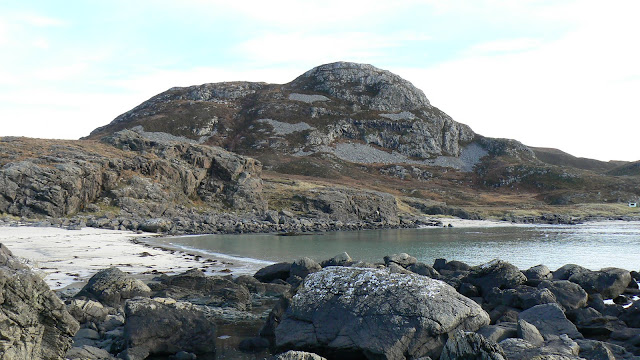Ancient nuclear reactors buried in lake and shallow ocean sediments may have cooked early microbes, according to a new study. And radiation from the deposits could have delayed the onset of our modern-day, oxygen-rich atmosphere, and even had a hand in shaping the genetics of primordial life.
Natural nuclear reactors dating to 2 billion years ago have been found in Gabon, Africa. Though long since exhausted, scientists know from the unusually low quantity of the Uranium-235 isotope in the rock that they once went critical, and hosted a sustained fission reaction that went on for as long as two hundred thousand years.
A billion years earlier, such deposits could have been common, say Laurence Coogan and Jay Cullen of the University of Victoria. The first oxygen-producing bacteria colonized lakes and shallow seas, and likely created oxygen 'oases' in an otherwise nitrogen-dominated world.
"Oxygen oases would have been hot spots for uranium concentration," Cullen said, because oxygen dissolved in water would draw uranium out of rocks and sediments. "Back then, there was so much more 235U that a softball-sized chunk of uranium would be enough for it to go critical."
If the researchers are right, wherever there were oxygen-producing bacteria, there were also natural nuclear reactors. Radiation could have damaged the bugs' DNA, either directly from the reactors or as leftover atoms of radioactive strontium (Sr) and iodine (I) made their way into the food chain.
Igneous rocks on Iceland. Ancient nuclear reactors buried in lake and shallow ocean sediments may have cooked early microbes, according to a new study. (image right)
In short, organisms that produced oxygen 3 billion years ago were shooting themselves in the foot by spawning toxic nuclear reactors. That may explain why it wasn't until around 2.3 billion years ago that oxygen finally started building up in the atmosphere. By then, Cullen said, most of the readily available nuclear fuel was used up.
However, it's also possible the reactors had a positive effect on early life.
"Modern cyanobacteria are quite good at dealing with ionizing radiation," Cullen said. "The question you have to ask is, 'Why?' Well, maybe there was some selective pressure back then that forced them to develop that resistance."
The researchers' work was published in the latest issue of the journal GSA Today.
Radiation is harmful because it causes uncontrolled mutations in organisms' DNA. But mutation is also the engine of evolution. Cullen said it's possible that natural nuclear reactors may have molded the genetic makeup of early life forms.
"There is no doubt that sources of radiation from geology, the sun, or cosmic rays will definitely cause mutation, and they were almost certainly all higher back then," Paul Falkowski of Rutgers University said.
One way to test that model might be to test ancient rocks for concentrations of lead (Pb) that would indicate whether or not natural nuclear reactors were common in antiquity.
by "environment clean generations"







 Posted in:
Posted in:
0 comentarii:
Post a Comment